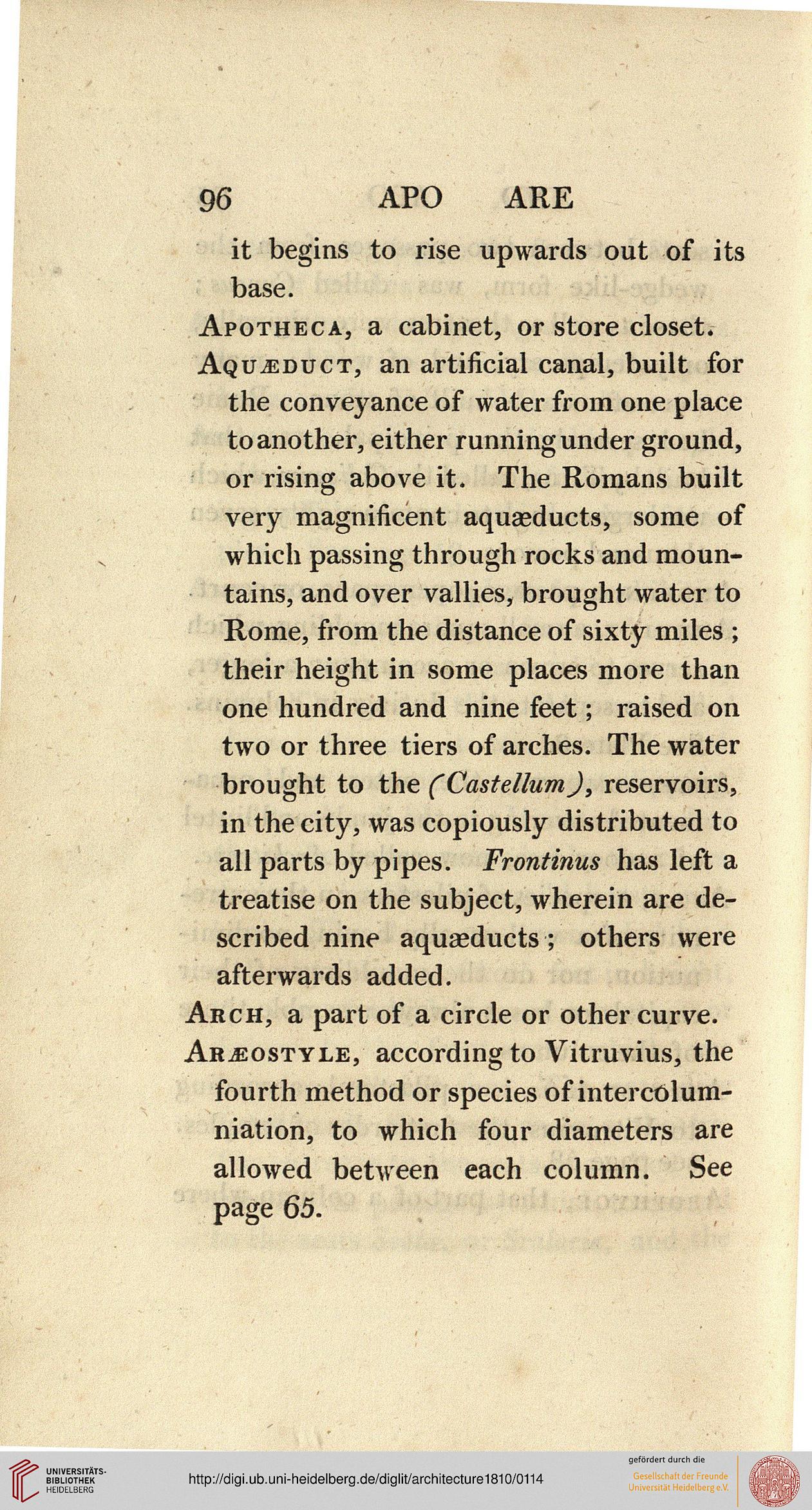96 APO ARE
it begins to rise upwards out of its
base.
Apotheca, a cabinet, or store closet.
Aqueduct, an artificial canal, built for
the conveyance of water from one place
to another, either running under ground,
or rising above it. The Romans built
very magnificent aquseducts, some of
which passing through rocks and moun-
tains, and over vallies, brought water to
Rome, from the distance of sixty miles ;
their height in some places more than
one hundred and nine feet; raised on
two or three tiers of arches. The water
brought to the (CastellumJ, reservoirs,
in the city, was copiously distributed to
all parts by pipes. Frontinus has left a
treatise on the subject, wherein are de-
scribed nine aquseducts; others were
afterwards added.
Arch, a part of a circle or other curve.
Arjeostyle, according to Vitruvius, the
fourth method or species of intercOlum-
niation, to which four diameters are
allowed between each column. See
page 65.
it begins to rise upwards out of its
base.
Apotheca, a cabinet, or store closet.
Aqueduct, an artificial canal, built for
the conveyance of water from one place
to another, either running under ground,
or rising above it. The Romans built
very magnificent aquseducts, some of
which passing through rocks and moun-
tains, and over vallies, brought water to
Rome, from the distance of sixty miles ;
their height in some places more than
one hundred and nine feet; raised on
two or three tiers of arches. The water
brought to the (CastellumJ, reservoirs,
in the city, was copiously distributed to
all parts by pipes. Frontinus has left a
treatise on the subject, wherein are de-
scribed nine aquseducts; others were
afterwards added.
Arch, a part of a circle or other curve.
Arjeostyle, according to Vitruvius, the
fourth method or species of intercOlum-
niation, to which four diameters are
allowed between each column. See
page 65.




